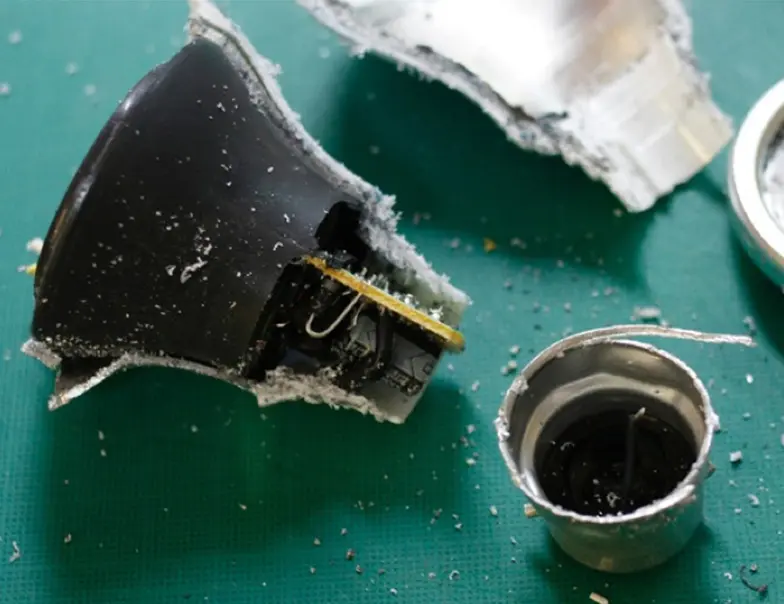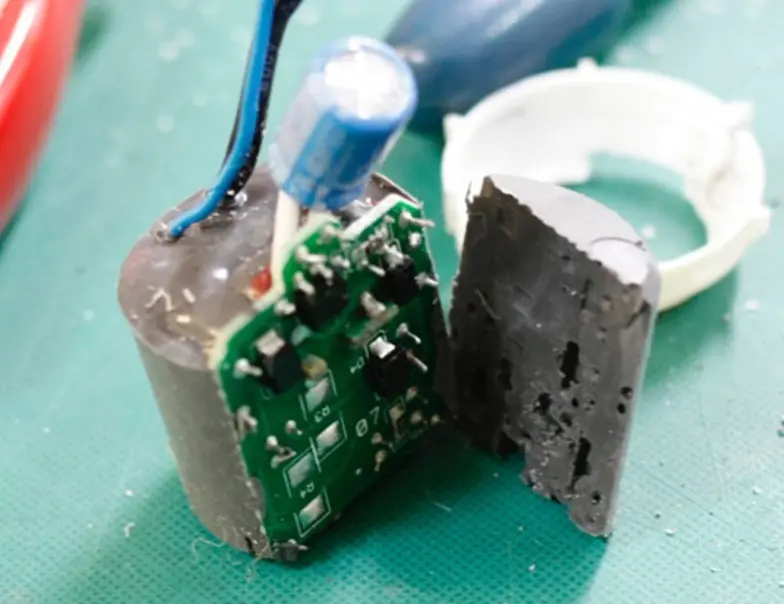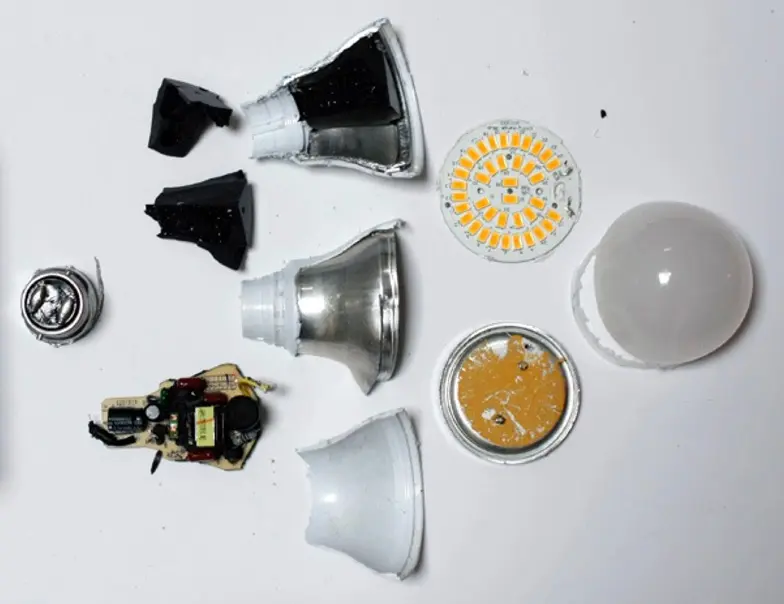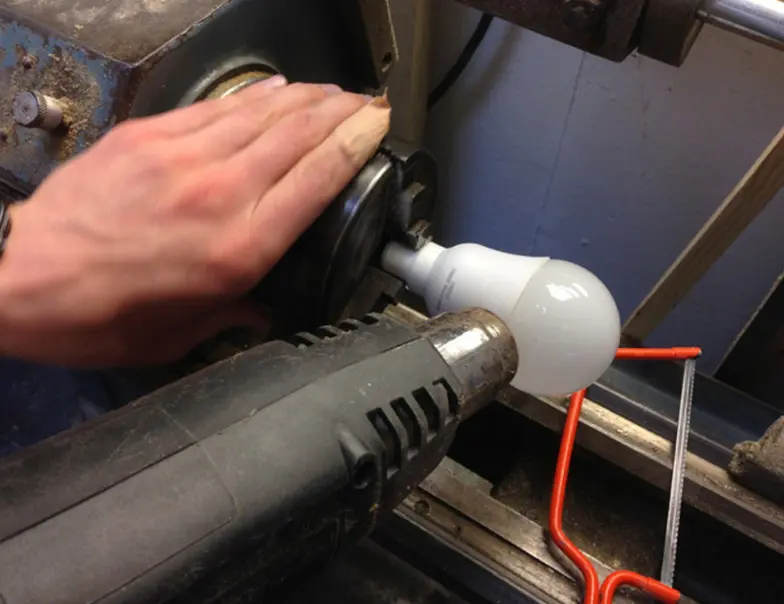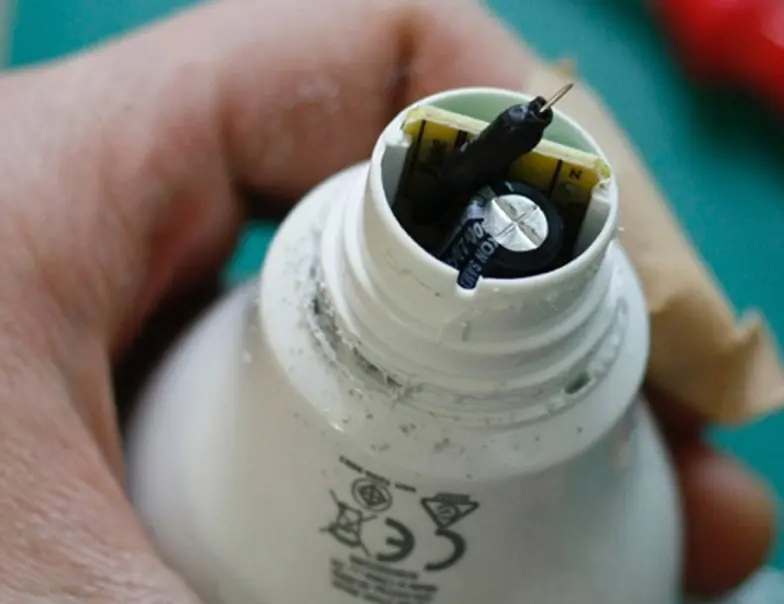Circular Economy Light Bulbs
An Innovate UK-funded research project that reimagined light bulbs as a lighting service. By selling light as a service, we created a business model that makes LED lighting more desirable for consumers, ensuring a circular flow of the bulb’s critical materials and reducing the lifetime energy consumption of lighting.
17% of all energy generated internationally is used for lighting, provided through a mix of different lighting technologies, the most recent of which is the Light Emitting Diode (LED). LEDs switch on instantly, create good quality light and offer dramatic improvements in energy consumption.
To deliver these energy savings, light bulbs have become high-technology products, containing a complex mix of materials, including a variety of critical materials . When LED bulbs stop working, they should go into the electronic products recycling system , requiring a householder to visit a civic amenity site or light bulb recycling point. In reality, this simply doesn’t happen. Either people aren’t aware of the regulations, or it’s too much effort to get the bulb to the correct place for disposal. Instead, bulbs end up in household bins. As a result, the consumer recycling rates for light bulbs in the UK are around 1%. Even for the bulbs that do make it into the recycling system, our current recycling technology isn’t able to recover their critical materials.
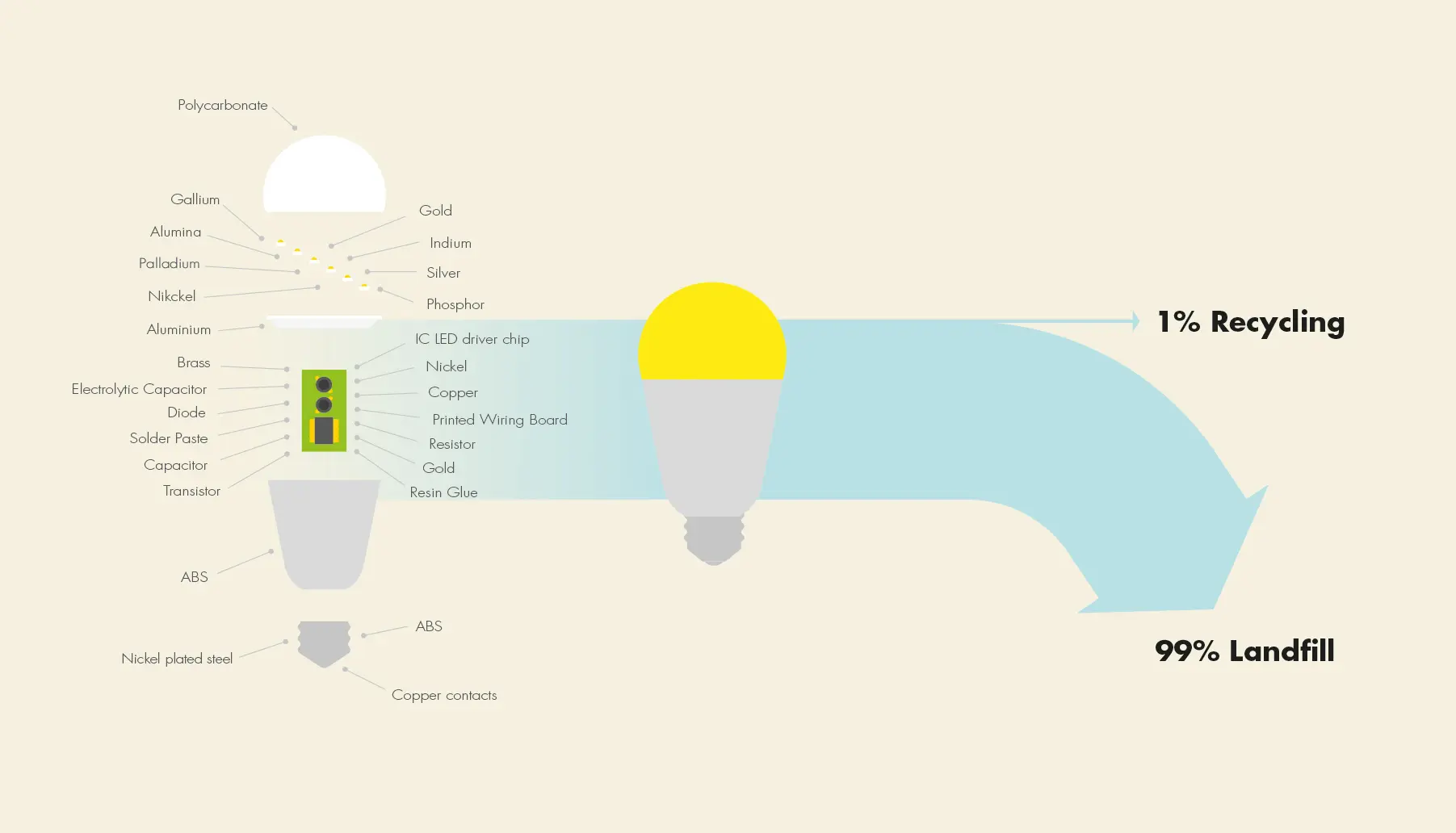
Our Process
Through a combination of existing literature, product teardowns and talking to experts, we built our own picture of today’s LED technology, including a detailed Life Cycle Analysis model (LCA). Our LCA highlighted the importance of energy in use, which accounts for 95% of the lifecycle energy. While the focus of the project was on material flows, this showed that any design solutions would have to tackle energy in use. Forecasts of future LED production also show how fast the technology is changing, with efficiencies set to double in the next 5 years and keep progressing. This poses an interesting obsolescence challenge for a product that has the potential to last such a long time.

Functionally, we found that power supplies can be the achilles heel of LED bulbs. The heat generated by the LEDs puts the capacitors under thermal stress that can reduce their life to only 5000 hours - much less than the commonly quoted 20-25,000 hours of life for LED bulbs. We were surprised by how hard it was to isolate power supplies from the rest of the bulb. They were often embedded in potting compound, making disassembly near impossible.
We paid particular attention to the material composition of the bulbs, looking at LEDs at a micro scale to understand their critical material content. We learned about the magic of n-doping and p-doping and how the ratio of gallium nitride to indium nitride leads to the emission of different light spectrums. The amount of these materials per LED is extremely small, to the point where it seems insignificant. Yet, there is enough to make another LED bulb if we can capture it effectively. Unfortunately, today’s recycling technologies cannot recover these materials from end-of-life products. To find a future solution, we talked to emerging recycling technology research groups (Imperial College and GeMMe ). While each employed different technologies, all said that recycling these materials would be possible in the near future. However, the feedback was the same: they all needed a clean feedstock of just the LEDs or the LEDS on their circuit board. This is something the current recycling system will never deliver.
While the recovery and recycling of critical materials is a challenging task, it seems vital to find a model where recovery is as close to 100% as possible. The elements used in these light bulbs have existed since the beginning of the universe and have the potential to solve all kinds of problems. LED production is set to boom in the coming years. If we don’t find a way to capture their materials, rather than losing track of them, we will have no idea what sort of future technologies we might be inhibiting.
A lighting service
To solve the material challenge and address the fast-paced technology change of LEDs, we developed a lighting service where consumers don’t own light bulbs, but instead pay for their use. For an annual fee, consumers get light bulbs delivered to their door. If anything goes wrong with the product, it is replaced as part of the service.
Shifting the business model creates a very different consumer proposition. We remove the high upfront cost of LED technology - the major barrier to consumer adoption. We enable consumers to make the most of rapid technology improvements, with efficiency upgrades as part of the service. We also give people the freedom to change and adapt their lighting as their needs change: if you change your fittings, redecorate or even move house, your lighting can change with you.
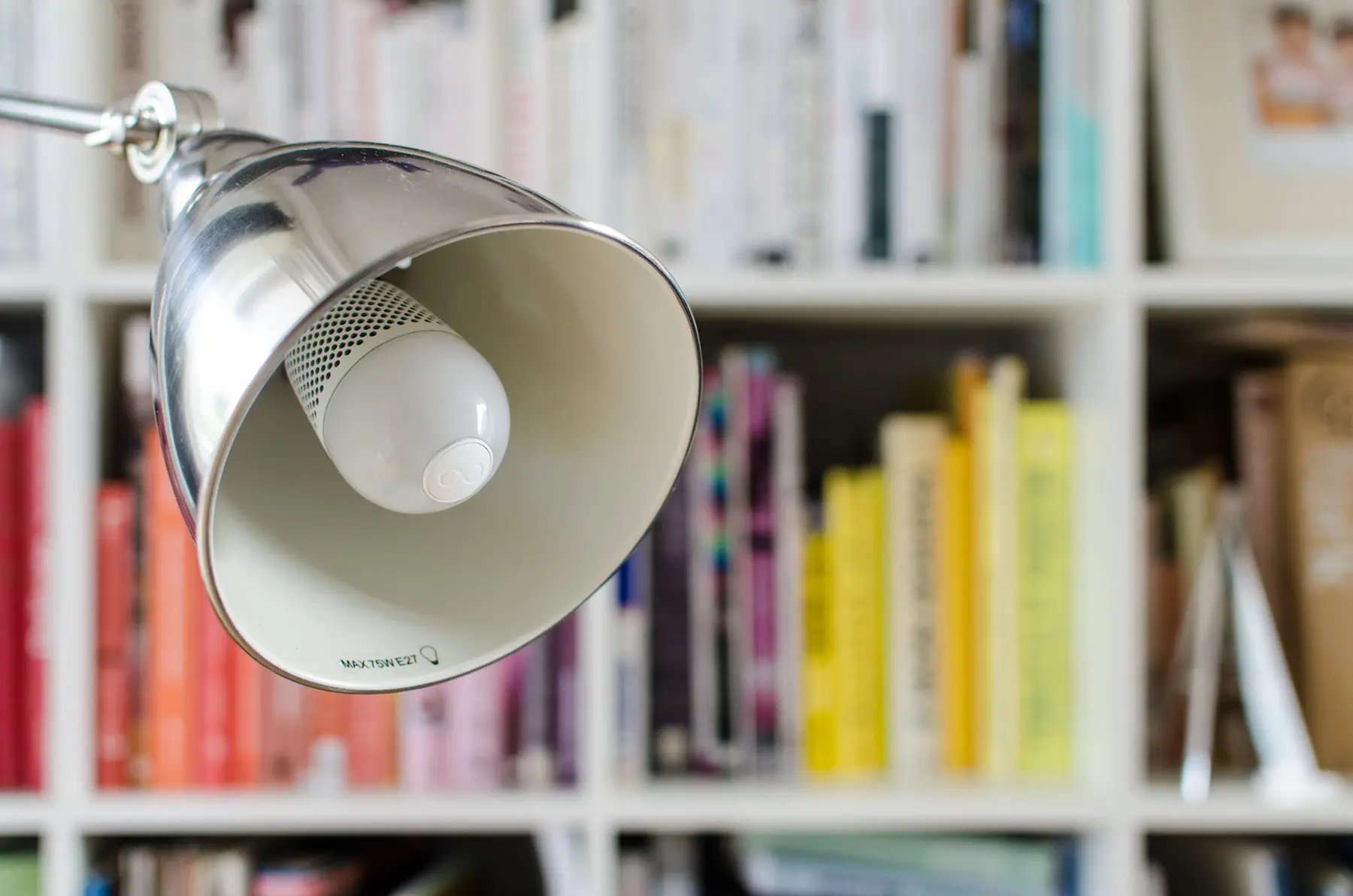
While the idea of a lighting service isn’t new for business-to-business sales, there is nothing that takes this approach for consumers. This is in part because current products don’t fit the business model. The fast pace of LED technology change is problematic for a service; if you are paying for light bulbs that are inefficient compared to the latest models, the service quickly becomes unappealing. Instead, we created a modular bulb that decouples the fast-changing LED technologies from more mature power supply technologies. This helps to avoid obsolescence, something that can be problematic and unprofitable when offering a product as service.
A modular approach also means we can post out product updates, so the technology can get better over time and users get a continually improving service. By creating an ongoing interaction with the customer, we make it easy for the old LED cores to be returned by post in the same packaging that the updates are sent out in. This crucial step can jump us from today’s recycling rates of 1%, to recapturing 100% of the products, ensuring we have a continuous flow of materials.
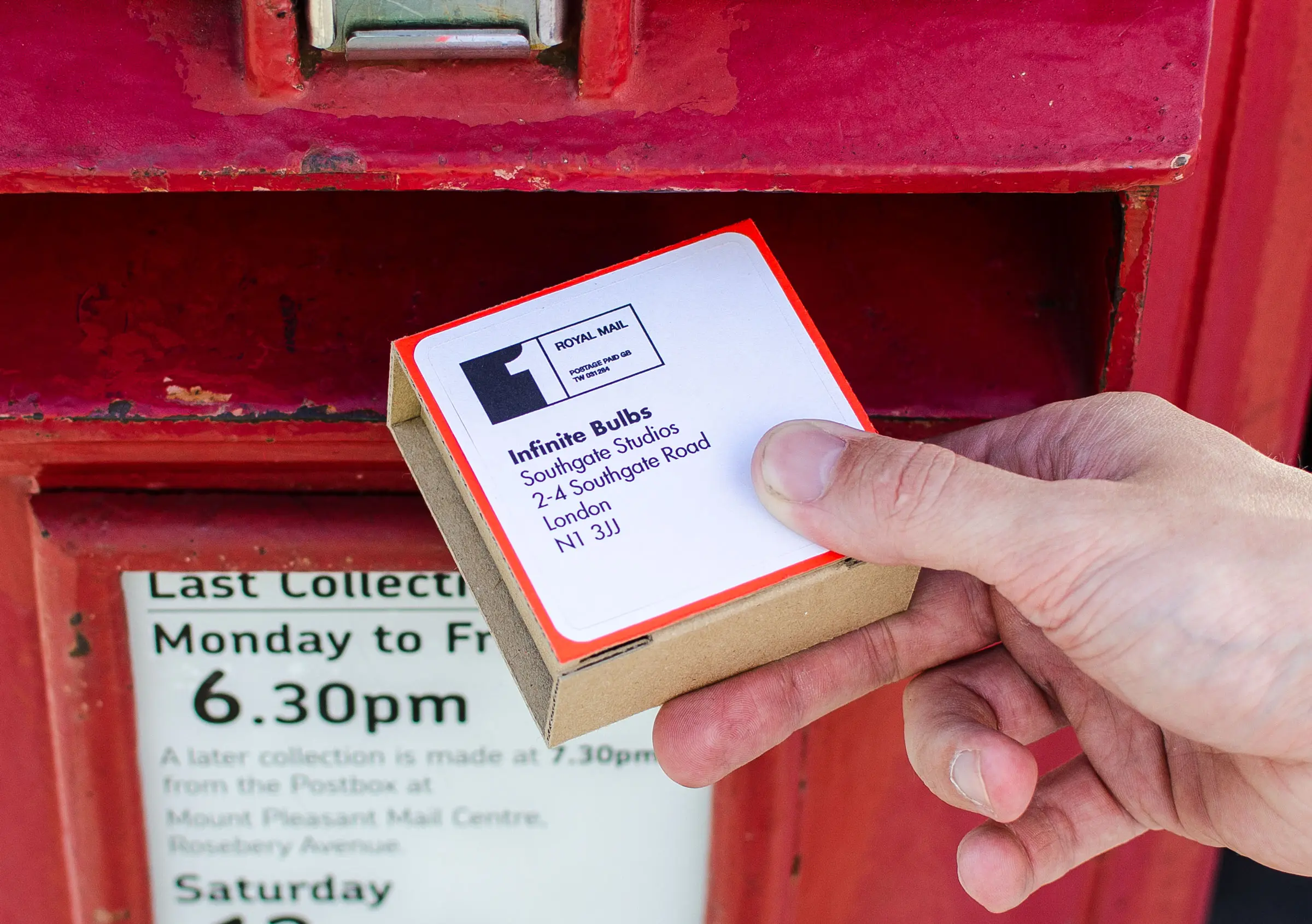
By delivering a continuously improving product to the customer we can generate a 35% energy saving across the product lifetime when compared to a typical LED light bulb.
Smarter services
To make a service like this work well we need as much information as possible about usage, performance and location. This is made possible by using low-cost connected technologies that allow you to communicate with the bulb through the internet.
While connected technologies can deliver a host of functionality for the consumer (safety features , adaptive lighting , interconnectivity ), they also enable a better service experience and better environmental performance. By measuring temperature information over time we can accurately predict when a bulb will fail, allowing us to pre-emptively replace it. Information on usage allows us to optimise when to send out updates. If a bulb is used a lot, energy in use dominates the lifecycle and upgrades should happen as soon as more efficient LEDs are available. Having accurate information about usage and performance also means we can make design decisions based on real data for the next generation of hardware.
More fundamentally, having live product information means we can transition away from the idea of products being sold and never seeing the materials again, to the idea of a live inventory of materials - one where we know how much is in use, where it is and when it’s coming back.
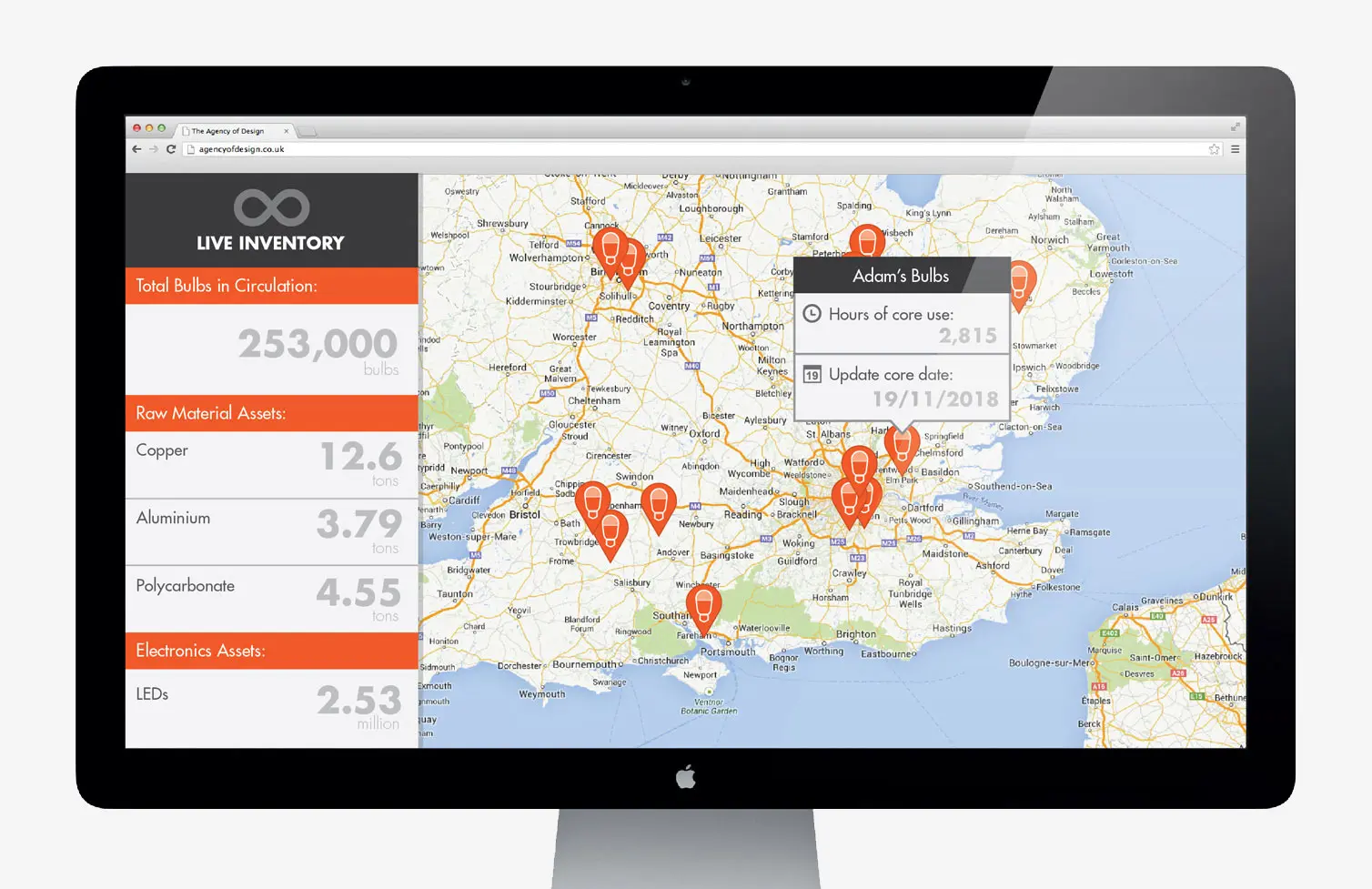
Where next
What started as a project focused on critical materials grew into a business model that delivers benefits for consumers and manufacturers alike. The project is now being developed into a demonstrator.
